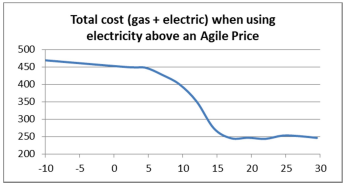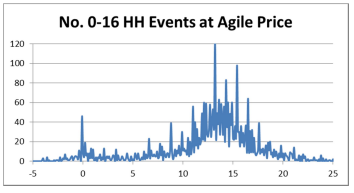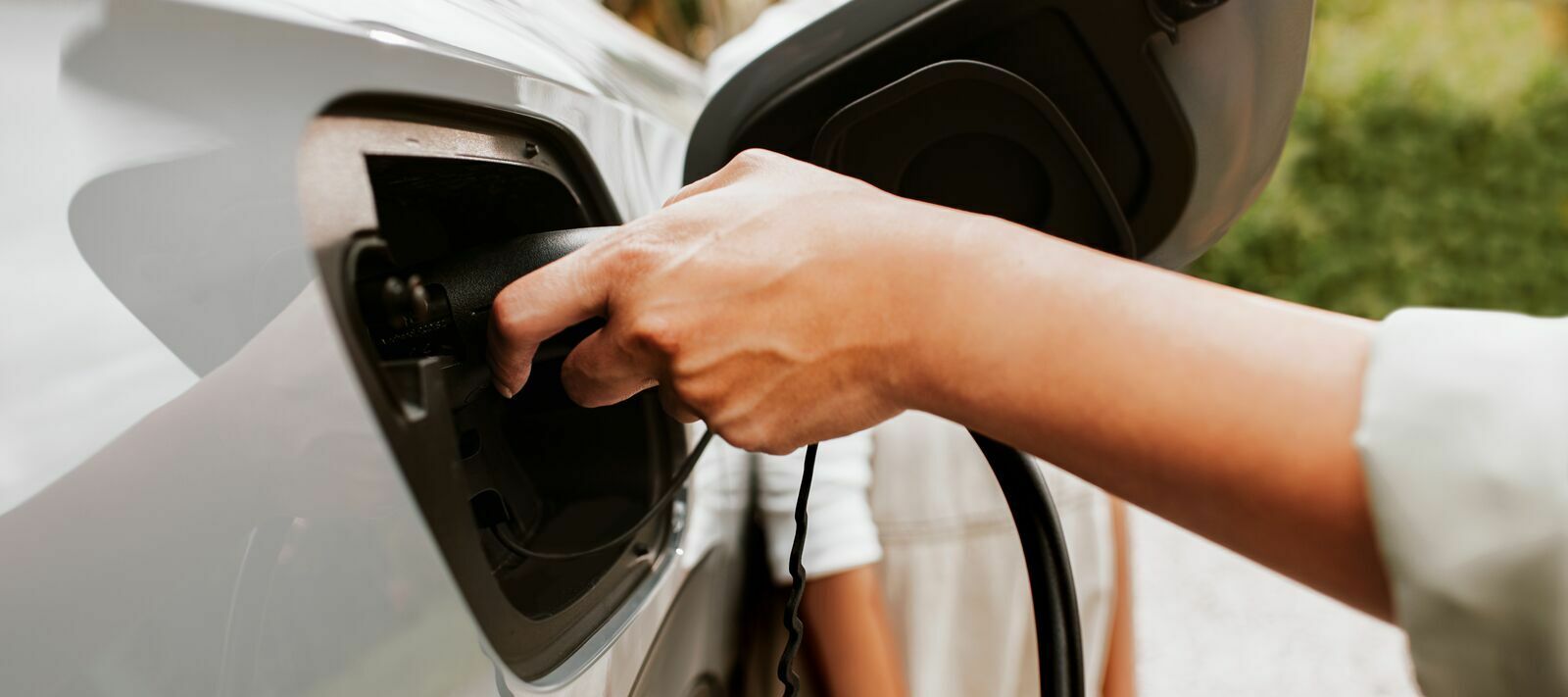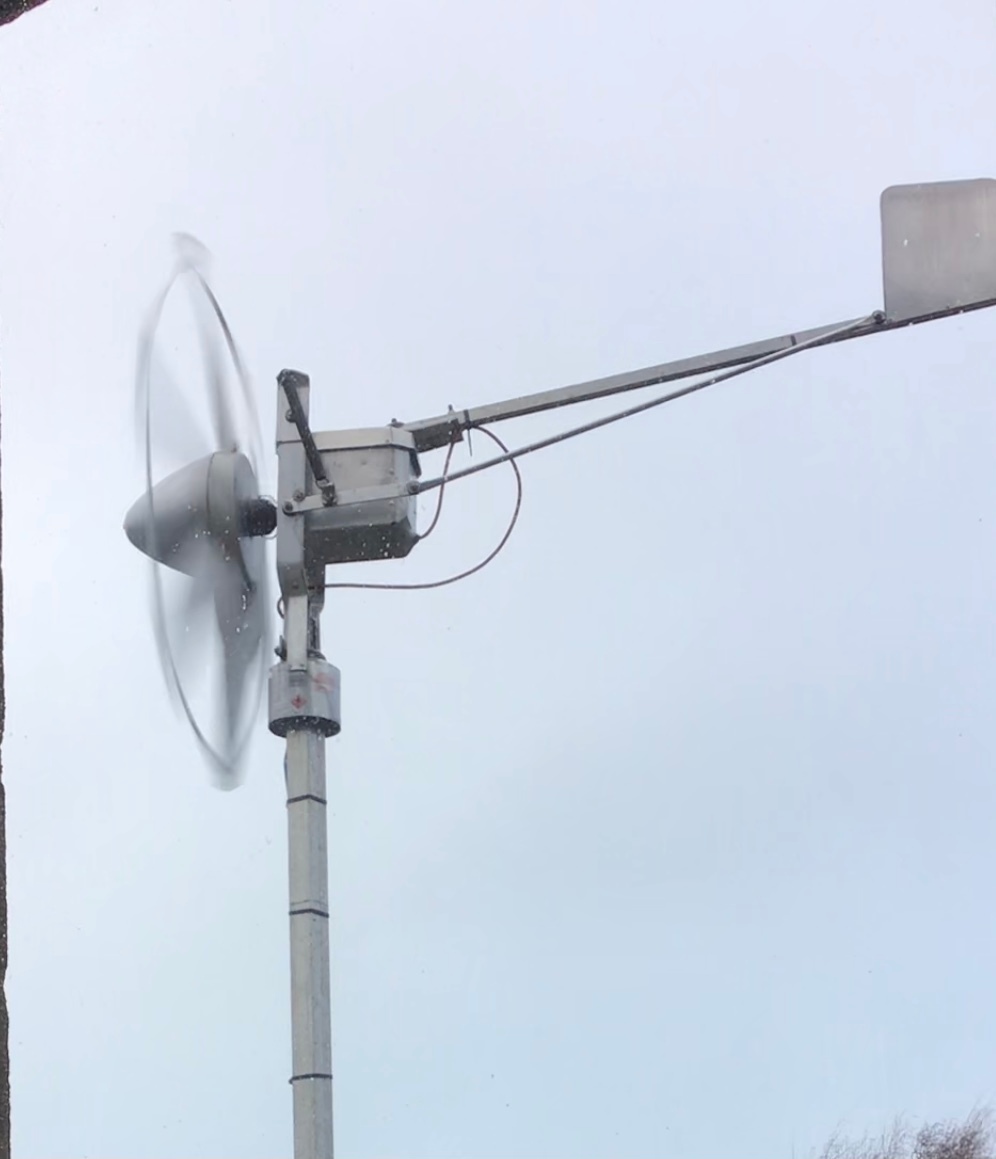This was supposed to be a short piece. My apologies in advance to the part of your life you won’t get back after you have read it but it does a condense a lot of thought and research into one article so I think it’s worth reading. To save time you can skip the boxes.
This is an personal journal of how the use of energy in one household has evolved over the past few years with a surprising setback but also an unexpected development and future possibilities for getting towards Net Zero. However, this is not about how a typical migration might happen. This is about an experiment that was kick started out of the chaos that was the result of Covid and then Russia invading Ukraine and how it influenced my thinking about how to reduce my costs with very high energy prices.. What is being presented here is more of a journal of what happened over the past few years to our household and it’s about provoking thoughts and discussions on the various pathways by which Net Zero may be achieved and it can only be achieved if it’s affordable.
Technical note: In physics, Lagrangian mechanics is a formulation of classical mechanics founded on the stationary-action principle (also known as the principle of least action – Ah, someone who understands how I run my life).
In the same way, I believe the path to Net Zero has to be the path of least cost for the consumers of energy. If an option is not least cost then I don’t believe you will get the majority of people to take that path. In fact, they won’t be able to afford it. I believe that all the actions I’ve taken on my path were least cost, or at least speculation on the basis that calculations at least show they lead to a lower cost solution. Very little of this was planned. I didn’t have any clue as to where this was going to go before 2020. It just went down the path of least cost, and having seen a lower cost future, that is where this experiment is probably going to go.
2014 – August - Changed my energy supplier to Ovo – At the time the UK were running a significant number of coal fire power stations. Green Energy wasn’t such a thing as it is now. Certainly the thought of Green Energy wasn’t uppermost in my mind. I had retired the year before and instead of spending time earning money I was now spending time looking at ways of saving money. It’s what you do. My outgoings were somewhat more that my Railway Pension and I had to cut costs. I axed my BT Broadband and went to EE. I paid up the mortgage with my Endowment which had performed better than expected. Ovo was considerably cheaper than British Gas so I moved to a fixed plan and a SMETS1 Secure Smart meter was installed.
2020 – Time for an EV? – By this time the UK had decommissioned a lot of its coal fired power stations and wind power had really ramped up. There is a lot of noise now in the media about Climate Change. This had taken over from Global Warming as the dominant phrase. My 15 year old Ford Fiesta is now getting beyond its ‘Use By Date’ and I needed to change for something that was less expensive to maintain. Covid suddenly strikes and the world goes into a tailspin mainly of its own making as we would come to realise later on. Hindsight is a wonderful thing. World energy use goes down, or at least stops rising. No one knows the chaos that will ensue in the near future because of the disruption to energy production and the Ukrainians still firmly believe that the Russian’s threat to invade is just the usual sabre rattling. I’m looking at getting an EV and a number of spreadsheets later it’s obvious that the Zoe ZE40 is the one for us. Jenny is not so sure but generally trusts the decisions I make but to stop me making even more spreadsheets she agrees it’s probably a good idea. There is no getting away from the fact we need to replace the Fiesta. I don’t have enough money this year to buy a battery owned (as opposed to leased battery) ZE40 this year. Decision postponed. I buy a pair of ear defenders so I can’t hear the noises that the Fiesta is making.
November. On the Ovo front I take out a two year fixed plan at 15p a unit. This seemed an average bet at the time. Little did I realise how good that deal was.
2021 – Definitely time for an EV - March – we briefly looked at having solar panels and were quoted about £4,000 for a full roof system. The result was that, without batteries, we could only use about 45% of the energy that we produced. We could sell with the SEG but that is only 5p a unit at best. As far as I was concerned that was practically giving it away. Batteries added another £2,000 but we were still only saving a few hundred pounds a year and most of that in the summer. I had considered solar panels and car charging but this is a technical nightmare and if you can charge your car for 7p a unit then there is not a lot of point in doing that. Solar really doesn’t have much going for it as far as I’m concerned. On the face of it it’s ‘free’ energy but the payback time – the only criteria that you need to apply to any capital expenditure – is about 10 years. No, EV it is, because I can’t afford both.
July, we have enough money for a 2019 ZE40. There are three in England and one in Northern Ireland (not going that far and it’s half in the EU so heaven knows what complications could arise with bring that into England). One in Morecombe, one in Hartlepool and one in Plymouth. We look at the one in Plymouth, it’s a dream and we buy it. I don’t have a charge point so I’m paying roughly 30p a unit at my local car park. That almost seemed extortionate at the time. If only we knew what was going to happen.
My EVSE (Electrical Vehicle Supply Equipment) Saga
Time to get a Charge Point / EVSE and start the process. It’s going to cost £1,000 but I start it through Ovo. The first issue is that I want the EO Mini Pro which was originally on Ovo’s sign up page but has now disappeared. I call Ovo and they say I can go still with that. However, I’m looped. This means when my estate was built in 1980, to save money, the DNO ran a cable into my house and ran a loop from my house to my neighbour saving a bit of cable and not having to joint twice into the three phase feeder cable. To have a 7kW unit I going to have to get my neighbour unlooped from me. They’re an older couple and we get on well with them and we look after each other’s dog at times. Good neighbours. They don’t want their garden dug up though as they’ve just had it re -landscaped. Mmm. I was adamant I wasn’t going to get a 2kW slow charger. It takes a long time to charge and it has a host of issues including safety and lower efficiency. The final straw came when the DNO wouldn’t respond to me (and never did) regarding unlooping and registering a 7kW charger for capacity planning. I bought a 2kW Masterplug charging cable from Screwfix for £150. At least I’m on 15p a unit now. Actually 18.3p/unit when the 82% efficiency is taken into account. It would be 16.3p/unit with a 7kW unit. Later on it turns out that the EO Mini Pro was a unit that was prone to disconnecting itself from the broadband even with a good signal but to compensate it was very good at filling up with water. The company was hopeless at responding to customer complaints. Looks like I saved money and dodged a bullet. I opted to fix three of the 2kW unit’s issues. I added an Open PEN unit (fully disconnects the car on losing the three-phase earth back to the sub-station), replaced the three pin plug with a Commando plug (overheat issue) and socket and bypassed the small internal contactors (long term reliability issue) with an external contactor rated at 20A (for a 9.5A charging current). The last issue, 82% efficiency because the Zoe takes about 300W standby power can be fixed by upping the charge rate to 3.5kW. It would then be about 87%. 3.5kW because that is the limit that the DNO will allow you to go without having to inform them and it’s a safe level if you are looped with a neighbour.
Side Note: The engineering of enclosures
I have a lot of experience of keeping water out of enclosures. A lot of start-ups (and there really are a lot of those without enough engineering experience) seem to think that all you need to keep water out of a unit is make it IP65 or better. Wrong! Making it IP65 stops gross water ingress but doesn’t stop the unit breathing in moist air when the atmospheric pressure changes and then condensing out on the inside when the temperature drops. The water tightness of the unit then stops the water getting out. Consequently it slowly and steadily fills with water to the surprise of everyone except people like me. You at least have to have a drain hole, which then doesn’t qualify it for the IP65 rating. But it’s the IP65 rating that sells units because people don’t know any better.
I make my own units. They are fan ventilated at a very low rate. No filling up with water. No overheating in direct sunlight. When I researched getting an EV I spent 90% looking at cars and 10% on charging it. With hindsight, it should have been the other way around. The cars are just cars but finding a decent EVSE is not easy. Good luck!
September – We’ve only had the car six weeks and there is a perceived future shortage of fuel (by the press) caused by a supposed shortage of delivery drivers. Panic buying fulfils the prophecy by creating a real shortage of fuel. We breeze past filling stations with massive queues. Those that had no queues had no fuel either. Time to feel smug about having made a timely call. In reality it’s just good fortune.
Side note: The car we would have bought instead of an EV
If we hadn’t bought the Zoe it’s very likely we would have replaced the Fiesta with a petrol Skoda Fabia with a fuel consumption of about 11 miles/litre so all comparisons are now compared to that. With the 2kW charger I’m now saving an average of £75 a month on fuel costs. On top of this for petrol/diesel at least 50% is tax. 70% of what you just paid tax on you throw away as heat. Some of that can be used in winter otherwise it’s a complete loss. The EV is eerily silent (points on the licence for inadvertent speeding
is now a real possibility but thank goodness for speed limiters), it’s the smoothest automatic you have ever driven. I call it my magic carpet. We were going to keep the Fiesta for long journeys. A two car PHEV solution if you like. Jenny said she was going to use it for that, not having the confidence to trust an EV to do a long journey. The lack of confidence didn’t last long. She never drove the Fiesta again. It sat outside unused and unloved so we sold it to a mechanic friend who could do the expensive cam belt change that it needed. We have gone full BEV. No safety net.
2022 – Winter came and we use the defrost feature to condition the car before driving. No more scraping ice and sitting in a freezing car that is reluctant to start. At the press of a button on the key fob the car becomes warmer than the house in 10 minutes. Russia invaded Ukraine. Everybody was shocked but we kept calm and carried on except the rest of the world which went into Tailspin 2 and started grabbing LNG Gas Tankers like a Hungry Hippo game on steroids. We had more money so we won that game at a considerable cost.
July – Fuel shortages start. Gas prices reach astronomic levels and everybody is now in real shock due to the double whammy of Ukraine being invaded and the post Covid recovery soaking up a reduced gas supply. Petrol is £1.92 a litre. I’m still on my 15p tariff (sounds of hands being gleefully rubbed together) and now £140 a month better off (summer BEV efficiency (4.8 miles / kWh – do the maths) vs petrol price). Energy suppliers go bust, EV prices skyrocket. We can’t believe our good fortune. Everyone else is suffering badly but we aren’t because of a simple, earlier decision. The impending huge increase in tariffs galvanises me into topping up the loft insulation to 300mm and the cost is a no brainer. We also have cavity wall insulation from 2006.
November. Our two year fixed deal ended. EBSS came and went.
2023 - May my tariff is 34p and I’m still saving but it’s down to less than £40 a month. Not looking so good now.
September - falling tariffs and summer BEV efficiency means I’m back up to saving £80 a month. To be honest, driving an EV is such a great experience all round that I’m not overly bothered on the reduction in saving but more is better. Electricity is also a lot greener now and only occasionally give in to the temptation of giving petrol stations the bird (especially tempting when they put their prices up on a Bank Holiday) as I glide almost silently past.
On an Ovo web page I saw there was an add on called Power Move. You could save £10 for September if you kept your usage during the peak to less than 12.5%. I joined a few days into the month and very easily picked up £9.52 for essentially doing nothing. Sometimes I had been charging partly in the peak but now this was all moved to 10pm and later. I then succeeded in all the PMs from October to February. I decided to see if I could help out on the forum giving tricks and tips to those who would listen. During this time I was reading up on power generation and a lot of the good blogs came from Octopus and Squeaky that were just groaning with information and this explained how the market for trading power occurs at different times. Futures market, Day Ahead and the Balancing Mechanism. This led me to pay more attention to Agile Octopus, the Day Ahead market and pricing. Neither my car nor my charging set up was compatible with Ovo Charge Anytime so I had no way forward there. I looked at other utilities but these either had similar equipment limitations or had restricted hours. There is no good solution to be had apart from taking a risk with one particular product.
November – Ovo have a good rate for Heat Pumps so I’m now looking to go with one of those to be greener and save a bit of money. I’m not expecting to save much if any. Back in 1999 British Gas put in a new boiler for me. The original one, from when the house was built in 1980, had lasted 19 years and, incredibly, our Potterton 60e (gravity fed) boiler is 24 years old now. It’s 75% efficient so not too bad and I run it at the lowest possible temperature. It’s now old enough for it to move out. Granted, it was well maintained and we have always had a wood burner stove which takes a lot of the winter heavy lifting. This left the gas boiler to top up and even out the temperatures around the house with TRVs on the radiators. We paid for a special offer Ovo EPC survey for £25 and £350 for a heat pump survey with Heat Geeks who had a lot of good blogs on heat pumps. I also did a heat loss survey (it’s just physics) and had very similar results to HG. It showed a deficiency in the extension on the front of the house where the extra radiator was too small for the heat losses. All the other radiators were fine and we never had a problem with heating the house except for the extension and the bedroom above it even on very cold days. The TRVs were good for keeping the temperature lower in the rooms we didn’t use so much. I was expecting something like £11-12k and this was the guide figure for our size / type / age / insulation level of house. You can imagine that we were a bit stunned when the quote came back at £16.5k. In the quote all the radiators had to be replaced. The very same radiators that the old gas boiler was very happy to heat with a 50C flow temperature and no wood burner. This is a 43 year old house (only four years above the average) with 22mm pipes (newer properties have micro bore) , cavity wall and 300mm loft insulation. We would also have to be unlooped (Nooooo, not again!) from our neighbours as before. You also can’t zone the house with TRVs as it reduces the efficiency of the heat pump. That is a complicated story and best left to the Heat Geek blog to explain but essentially a heat pump driving a conventional central heating system is only just able to reach it’s COP target. If you change the flow rate with TRVs (you zone the house) you reduce the COP so much that keeping one room slightly cooler means that it becomes even more expensive to heat the house.
We declined and I was at somewhat of a loss to know how to make the house greener but we weren’t going to do it at any cost.
2024 – January. For the past few months I’ve been looking at Cornwall Insight to look at energy prices in the long term. I came across one or two articles elsewhere saying that rates are not likely to be dropping significantly in the next decade as the latest round of strike prices for power generation had been at a much higher level than previous due to the significant bout of high inflation that we just had. In fact, with the strike price limit imposed by the NG ESO in the first round not all the generation capacity was fulfilled. No one wants to build infrastructure at the old rates. On the Speak EV forum I had been tracking comments about different tariffs (possibly the top issue for discussion these days) and Octopus, and specifically Agile Octopus had come up quite a number of times. I found it was possible to download Agile data as far back 2018. Using my Ovo usage data I could run that against the HH Agile rates (do a HH convolution) and work out whether I would be better off or not.
The results are In
2018/19 is not representative of today’s level of green energy production.
2020/21 was atypical due to Covid.
2022 was horrendous in terms of pricing and I would have just broken even but peak rates were up to 75p a unit (£350/MWH wholesale, For comparison the Hinkley C strike price was considered expensive at £92/MWH in 2012 ) 2023 showed a marked decline in rates and less spiking and I would have saved about £200 over the year for the car but a slight loss for the house.
2024, however, showed the same downward trend and predicted of a saving of £350 for the car and £150 for the house. I wasn’t expecting to save on house use. This is also with us not changing anything in the way we use power. Going back to Power Move, I figured if I could do that with the ease (usually managed 7-8%) then moving to Agile Octopus was the logical next step. I really want to stay with Ovo. I had been with them for 10 years and not had any regrets but I had no way to move forward with them so, reluctantly, I click the button to switch to Agile Octopus.
March - Octopus took over my meter readings and although it was a SMETS1 meter they did the transfer in the 14 days they said they would. Since then a couple of things have happened. Firstly, the rates have continued to come down from the January/February levels. In fact, the All-Day average price is running very close to 50% of what it was doing 12 months previously and that was on a decreasing slope from the highs in 2022. This means my early predictions are underestimates and I could end up saving as much as £600 on a £1,200 electricity bill. The gas is a similar rate to the SVT anywhere so no savings there. Well, that turned out to be wrong but for a totally unforeseen reason.
The big (but smaller) light bulb moment 1
The day ahead price is subject to very big dips on occasions when the unit price goes to near zero or even negative and it like trying to imaging negative bank rates. Surely, if the bank rate were to go negative you would take out the biggest possible loan that the bank would give you and rake in the money. It doesn’t take an Einstein to realise that when prices are that low (or even negative) you can plug in an ordinary fan heater and heat the house that way. And for nothing. Thank you B&Q for selling me a 2kW fan heater for £7. That paid back very quickly. I then pondered at what unit price it’s cheaper to heat with a fan heater than the gas central heating. It turns out the formula is obvious and simple. It’s the gas unit price (then 7.15p) divided by the boiler efficiency (75%). In my case it was 7.15 / 75% = 9.53p. Well, I’ll have as much of that that you are offering thank you very much. Some nights the rates have been zero and the house is really toasty warm in the morning. The fan heater goes on, the central heating goes off and it has cost me …. nothing and saved on my gas bill and it’s greener because the wind is pushing all those big fans around.
Hang on! Agile was about saving money on my electric bill but I’m now saving money on my gas bill as well. The problem is it doesn’t happen that often but it’s better than a poke in the eye with a sharp stick.
The big (but smaller) light bulb moment 2
Moving on. Same as above but with near zero prices why not switch on the hot water tank immersion heater when prices are low. I don’t have one at the moment but I’ve ordered one to go in my new tank for my new boiler. Same equation applies but because this will only apply to the current tariff (6.18p) and new boiler efficiency (90%) it comes out as 6.13 / 90% = 6.8p. Now there aren’t many opportunities to do this but when you do have long periods of qualifying prices but you can heat the tank to 80C (instead of 60C) and use it as a heat battery and save gas sometime after the Agile prices have risen again. You can opt for a higher price threshold to save more gas but the costs rise very steeply. For the immersion heater and the fan heater to save money work you have to use these intelligently and they relate to the gas margin price as I call it.
The small (but huge) light bulb moment.
BUT. Why are you using a fan heater when you could be using a heat pump which is at least three times more efficient? Whoa there, you’ve got a short memory there buddy. We rejected the heat pump remember. BUT. We don’t need a hugely expensive 7.5kW heat pump plumbed into a central heating system it can barely run. We can use a £800 air-air conditioning unit that also works as a heater. An air-air heat pump (AAHP). Ok. If the heat pump is three times more efficient (0.815 kW in / 2.93 kW out so a COP of 3.6) what is the revised formula to calculate the break-even price for gas? Gas price (6.13p) divided by the gas boiler efficiency (90%) times the COP (3.6) for an AAHP.
It’s now 6.13 / 90% x 3.6 = 24.5p. <Please insert your own phrase of sudden surprise here>.
Now, of course this is not going to work with an SVT but the vast majority of Agile prices from midnight to 4pm (every single day) are below 20p. We can now have electric heating at any time from midnight to 4pm. Apart from the coldest days this will replace a lot of the gas heating during this time. After 4pm it goes back to gas. As a bonus (as if we needed one at this point) it’s not only cheaper but greener. Instead of 100% gas we are now using 75% green energy. I’ve estimated that it would save about 4-6,000kWh of gas during the winter heating season.

There aren’t many HH events that are priced at 10p or lower so the saving is relatively small up to this point. From 10-15p there is a very large number of events and you sort of reach the minimum around 20-25p. After that there is a slow rise but only because there are only a very small number of events above 20p. This result means you don’t even have to do intelligent, price related heating if you restrict the operating period to 0-16:00pm. Of course, if the price should spike for some reason you can turn the air con off and use gas heating.


The above graph shows the gas use before (red) and after (blue) the air-air heat pump is added. The smaller blue plot is the gas usage after the 4pm cut off for the pump and before it comes back on at midnight.

This is the average Agile rate for the first three months of 2023. You could tailor the timing to miss out the rise between 6am and 9am and this will reduce the loss due to higher rates but it will also cut out some of the opportunities to cut out gas use. You can therefore make a decision to either optimise for cost or optimise for reducing gas usage (or somewhere in between). Money or Green, you decide. As we are saving big time on charging the car and house usage this could be optimised for gas reduction and utilise the whole of the 0-16:00 period. You could also include from 10pm onwards.

Gas heating will therefore happen between 4pm and midnight. There is no electricity usage for the AAHP between 4pm and midnight and particularly not during the peak. In our house we also have a wood burner so this takes over from 5pm to 11pm and generally keeps the gas central heating off during these times anyway. We still need the gas boiler for the majority of water heating.

But in case you want more efficient water heating
In looking for a heat pump version of a tank water heater I really wasn’t expecting to find one but you can actually get these. I think these are more popular in the USA. They cost about £1,400 but with the reduction in gas associated with heat the water (only about £150 gas usage over a year) there isn’t really a sufficient saving to make a business case for it. And it will be difficult to integrate this with a gas boiler. Well, I tried but not every idea works but, actually, there is still a more radical option at the end. Who said we still need a gas boiler?
Where we are now
So here we are, most of the way through April. We had another session of zero prices. My effective average tariff for the car is now 8p a unit but that could go up again. The average tariff for the house is 10p. If I had been on Ovo this would have been 27p earlier in the year and 24p now. The usage split between car and house is roughly 66% to 34%. The savings split is roughly 72% to 28%. Because the average Agile price has continued to decrease the projection for the year could as much as £700 for the car and house but could end up at £600. There was no cost to making this saving other than changing my supplier.
Invest to do better
If I fit the AAHP that should save (from the graph) another £200 a year. The immersion heater will save £20/30 a year but possibly more if we use it as a heat battery on occasions. The AAHP and immersion heater will save a lot of gas which makes us a lot greener. We could be down to as low at 20% of the gas typically used in a four bedroom, detached house with the occupants at home all day.
What are the lessons from this?
My son is an aircraft fitter. He repairs and modifies aircraft. He is a very skilled and experienced person. His favourite saying is ‘Don’t force it use a bigger hammer’ (as a joke). The big hammer we have at the moment is the gas boiler. The government would like to change it for another big hammer called a heat pump. The trouble with big hammers is that they are not subtle tools and apart from a few jobs they are not suited to many roles. The obvious trouble with gas boilers is they use gas. The hidden problem with heat pumps is they are generally unsuited to running a central heating system in the average house. Heat pumps have no problem with running air to air because air has a very low viscosity and flow rate is paramount in heat exchangers. For a heat pump to run a central heating system you would ideally have 28mm pipes everywhere and double panel radiators. This is fine if you set out to build a house this way but otherwise it’s a bit of a compromise and retro fitting a heat pump into the average house can be expensive and it’s not going to pay back in its lifetime even with a grant. Later on you won’t get grants. If it’s going to be expensive people are not going to have them fitted. In contrast, AAHP are small, cheap can be DIY fitted and still have a COP of over three. You could have a number of these distributed around the house so long as you have an outside wall. You just need the right tariff to run them.
This has been an incredibly interesting exercise reimagining what you could do if your electricity costs were significantly lower than the SVT/Fixed Price and the biggest surprise was realising that lower electricity prices coupled with an AAHP fitted in the lounge will significantly reduce gas usage and make the house greener.
… to be continued in Part Two!









